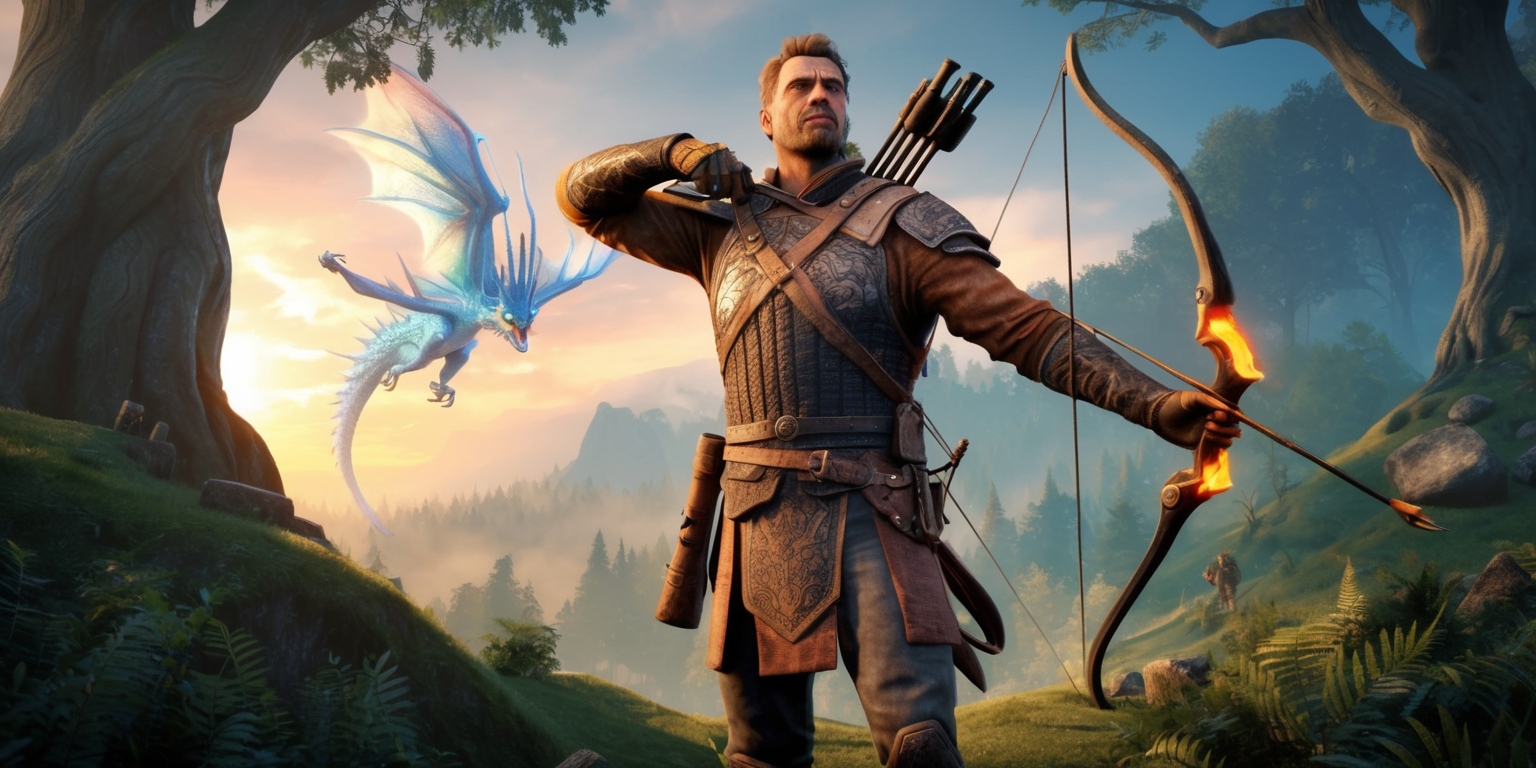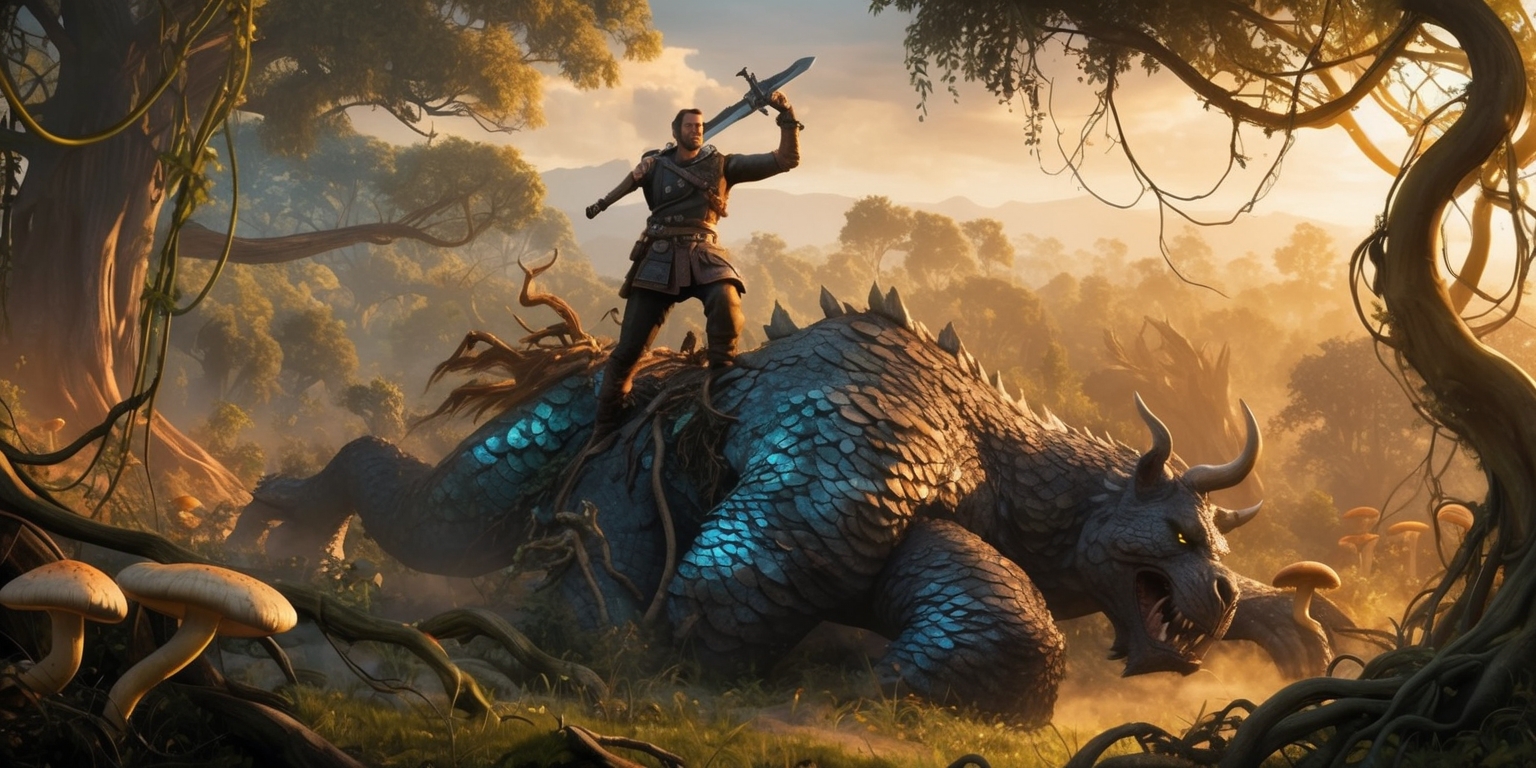 2025-04-28 05:17:41
2025-04-28 05:17:41
Hunting Beyond Boundaries: Mastering High Rank Tactics and Rare Treasures in Monster Hunter Wilds
Monster Hunter Wilds' vast world overflows with demanding trials and rich rewards for the brave at heart to explore its myriad ecosystems. A particularly captivating feature of the game is… is the pursuit of rare materials that enhance a hunter's abilities. Among these, the Bird Wyvern Gem stands out as a coveted high-rank resource obtainable only after reaching a pivotal point in the adventure. The process of acquiring this gem opens doors to deeper strategic encounters and offers players a taste of the thoughtful progression system that Monster Hunter Wilds employs. Embarking on the quest for such materials also calls for a thorough understanding of the game's intricate mechanics, such as unlocking new regions, recognizing monster behaviors, and tailoring attacks based on elemental affinities.
Unlocking a New Tier of Adventure
The journey to acquire rare materials in Monster Hunter Wilds begins with a transition to high rank gameplay. Players must complete the fourth chapter of the main storyline to access a more challenging portion of the game. In this stage, the mission titled "New Ecosystems" introduces hunters to previously unseen regions filled with formidable adversaries. Reaching this milestone is not merely a narrative progression; it is an invitation to experience enhanced monster behaviors and refined combat strategies. The careful design of this level ensures that only those who have fully engaged with the earlier parts of the game can navigate these treacherous terrains. The reveal of new biological and environmental challenges adds a layer of excitement and discovery that keeps the exploration fresh and meaningful.
Exploring Dynamic Ecosystems
After advancing to the elite echelons of the game, explorers find themselves traversing vibrant, dynamic landscapes that are home to unique creatures. This part of Monster Hunter Wilds leverages the intricacies of ecosystem design to immerse players in realistic habitats where every location offers its own challenges. The environments such as lush scarlet forests, sprawling plains, and frozen cliffs are not merely backdrops; they actively influence the behavior and strategies needed to confront their resident fauna. Each setting requires players to adjust their combat style, emphasizing the need for observation and adaptation. The interplay between weather conditions, natural obstacles, and the monsters’ territory adds a level of intricacy that benefits careful strategy planning and quick reactions during engagements.
Encountering Yian Kut-Ku in Diverse Terrains
Among the many creatures encountered in high rank play, Yian Kut-Ku is one that captivates players with its distinctive characteristics. Predominantly seen in environments such as the Scarlet Forest and Iceshard Cliffs, this creature challenges hunters with its unpredictable movements and specialized vulnerabilities. Its design not only emphasizes the aesthetic of the rugged wilderness but also ties into the gameplay by presenting defined weak areas that can be exploited. In these regions, players find that careful aiming towards the head or face of Yian Kut-Ku can shorten confrontations while demanding high precision. The encounter with this monster is not simply a test of combat skill; it is an opportunity to familiarize oneself with the fundamental mechanics of identifying and targeting specific anatomical features, a skill that is indispensable in subsequent battles.
Harnessing the Power of Elemental Attacks

Within the diverse combat techniques available in Monster Hunter Wilds, elemental attacks play a pivotal role in weakening formidable foes like Yian Kut-Ku. Players are encouraged to experiment with water, ice, and thunder elemental attacks when confronting this creature, as its natural resistance to these forces is relatively low. This tactical nuance adds layers to the strategic decisions made during battle: it becomes Not focused on raw power but rather on a carefully planned strategy precision. The incorporation of elemental dynamics not only diversifies the potential approaches but also appeals to players who appreciate depth in combat mechanics. The challenge lies in mastering a balanced loadout, ensuring that the chosen elemental attributes complement one’s play style while effectively countering the monster's inherent defenses. This strategy brings forth a harmonious integration of creativity and tactical prowess.
Navigating the Habitats of Gypceros
The pursuit of the Bird Wyvern Gem also leads hunters to cross paths with the agile Gypceros, a creature that roams several distinct locations in Animal Hunter Wilds. From the sweeping vistas of the Windward Plains to the dense areas of Oilwell Basin, and even the frigid expanses of Iceshard Cliffs and the enigmatic Ruins of Wyveria, Gypceros presents unique challenges across each environment. Its adaptive nature and diverse habitats make it a consistent test of player versatility. This creature is known for its tactical movements and its ability to disrupt the flow of combat with unexpected maneuvers. Engaging with Gypceros requires a careful assessment of the surroundings, as each location influences the dynamics of the battle. Players are thus compelled to refine their approach, taking advantage of environmental cover and strategic positioning during encounters.
Focusing on Anatomical Vulnerabilities
A critical component in maneuvering through the… battles with both Yian Kut-Ku and Gypceros is a deep understanding of their anatomy. In high rank encounters, identifying and exploiting specific weak spots becomes essential. For Yian Kut-Ku, the emphasis is placed on targeting the mouth and facial regions, which demand accuracy and timing. With Gypceros, the crest atop its head is a focal point: successfully striking it not only inflicts substantial damage but also disables certain aggressive maneuvers. Such detailed design encourages players to study monster movements and attack patterns closely. This aspect of gameplay rewards careful observation and tactical planning, where every precise strike contributes to the overall efficiency in battle. The interaction between hunter skills and in-game design ultimately creates a scenario where knowledge truly equals power, compelling players to engage thoughtfully with each encounter.
Strategic Approaches in Combat Scenarios
The challenges presented by these monsters are not simply a test of reflexes but also of strategy. High rank encounters, where monsters display increased resilience and refined behaviors, demand that players adopt a broader strategic perspective. Instead of relying solely on raw damage, tactical maneuvers that target weak points become crucial. For instance, focusing on the head or crest of a creature can disrupt specific attack patterns and reduce the resistance capabilities of the monster. This strategy encourages players to use a combination of agile movements and calculated positioning to create opportunities for enhanced damage. The requirement of thoughtful planning adds a cerebral element to Monster Hunter Wilds that distinguishes it from typical action-oriented titles. It fosters an environment where every engagement is both a test of skill and a puzzle waiting to be solved.
Adapting to High Rank Mechanics and Progression
Transitioning into high rank gameplay is about more than simply facing more formidable foes; it signals a significant evolution in a hunter’s journey. The unlocking of this advanced tier, which occurs after completing a pivotal mission, marks a deliberate increase in challenge and complexity. Players are introduced to environments and monsters that demand refined techniques and a more nuanced understanding of combat dynamics. This well-paced progression system ensures that the rewards, such as the elusive Bird Wyvern Gem, are balanced with corresponding challenges. The design philosophy encourages a gradual yet rewarding journey, emphasizing the importance of persistence and adaptation. Navigating this stage requires a blend of honed skills, strategic resource management, and a keen awareness of the evolving Menaces that hide in every nook and cranny of the game world.
Appreciating Visuals and Atmospheric Details
Monster Hunter Wilds is renowned for its vibrant world, and the aesthetics play a significant role in shaping the player experience. Every environment, from heated scarlet forests to icy cliffs, has been expertly fashioned with a rigorous focus on every nuance. The visual cues not only serve to create an immersive backdrop but also subtly hint at the gameplay mechanics inherent to each region. In the context of rare material hunts such as obtaining the Bird Wyvern Gem, experiencing these atmospheric details enhances the thrill of the encounter. The interplay of light and shadow, the dynamic weather effects, and the diverse landscapes all contribute to a sensory-rich experience. These design elements tie together the functional aspects of gameplay with a visually appealing presentation, reinforcing the overall thematic cohesion of the world.
Mastering the Art of Resource Acquisition
In the quest to collect rare materials like the Bird Wyvern Gem, players also engage in the strategic management of in-game resources. The high rank section of Monster Hunter Wilds offers a multitude of obstacles that necessitate perpetual watchfulness, from monitoring health to optimizing equipment for elemental resistance. Acquiring a rare gem is not merely about defeating the monsters but entails a broader understanding of game mechanics, including the timing of engagements and the efficient use of consumable items. This aspect of resource management lends depth to the gameplay experience, as players learn to balance risk with reward. The design encourages continuous improvement, urging hunters to refine both their combat strategies and their inventory setups, ultimately enhancing the overall adventure through a symbiotic relationship between exploration and preparation.
Integrating Advanced Combat Techniques
The journey through Monster Hunter Wilds is enriched by the integration of advanced combat techniques that allow experienced players to fine-tune their approach to difficult encounters. Within the high rank tiers, monsters such as Yian Kut-Ku and Gypceros exhibit behaviors that require a strategic combination of movement and targeted strikes. Engaging these creatures pushes players to exploit specific vulnerabilities with precision, while simultaneously adapting to the unpredictable elements of battle. This dual need for finesse and adaptability creates an immersive action environment that continually evolves. The high rank scenarios encourage experimentation with various weapon types and elemental combinations, empowering players to discover personalized combat methodologies. Each encounter thus becomes a dynamic interplay between planned strategy and responsive action, reinforcing the intricate design behind every facet of the game.


